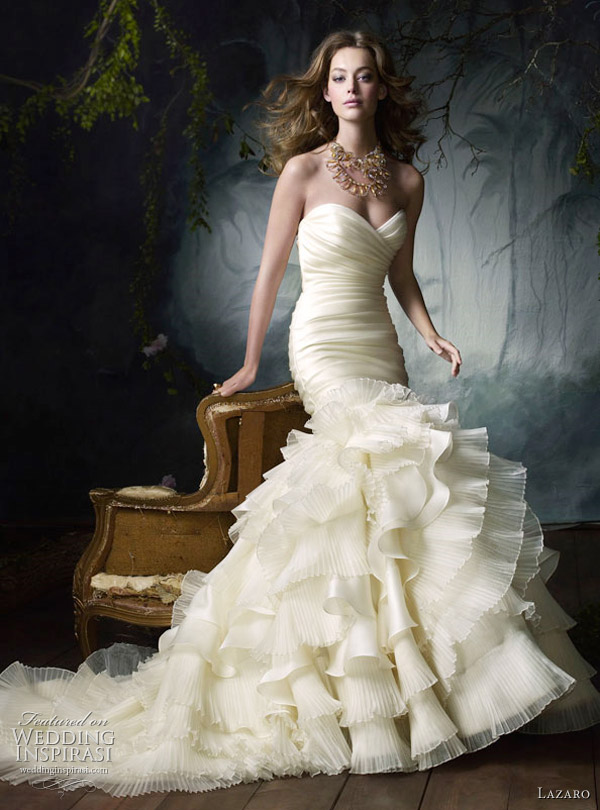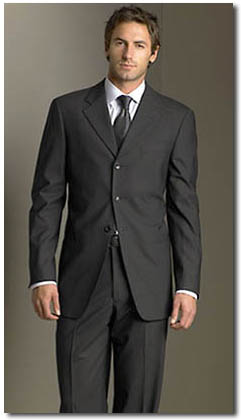In the 20th century DeBeers introduced modern society to the idea that a woman’s engagement ring should cost approximately 2 month’s salary and no one seemed to blink an eye. The engagement ring will probably be worn every day for the rest of a woman’s life – barring no unfortunate circumstances.
By comparison, no one has ever come forward to say how much a bridal gown should cost. What percentage of salary, wedding budget or any other indication of the amount of money one should spend. Of course the 2 months salary really was a genius marketing strategy and nothing more.
The best way to decide on how much to spend on your bridal gown is to first take a look at what’s important to you. First and foremost, determine your budget immediately. Before you open a bridal magazine, sit down with whomever is paying and have an honest conversation about price. Convey this to your bridal consultant when you enter the salon and it will help him or her determine what gowns you will be seeing.
After the budget is determined, consider the three F’s: Fabric, Fit and Finish.
Fabric: The quality of the fabric will increase the price of the gown greatly. Inspect the fabric… is it silk? Is it smooth or does it have inconsistencies in the weave? High quality silk and low quality silk have one thing in common: they are both silk. However, the process they go through to become a garment is entirely different. The reason some fabrics are more expensive than others because they are more valuable. They are better in quality, they look better and they feel better. High quality fabric makes a difference in price. Does it feel good next to your skin or is the fabric itchy? A quality garment begins with quality fabric.
Fit: Each manufacturer has their own standard sizing. What does that mean? Not every size 8 fits the same way. Vera Wang’s size 8 maybe be cut slightly different from Monique Lhullier’s size 8. Also, a great fit for your body may not be a great fit for the bride standing next to you. The truth is that a more expensive gown will have a better fit because a lot of time has been spent perfecting the pattern before it even becomes a gown. Maggie Sottero advertises her gowns as the best fit in the bridal industry. Is it true? Try one on and decide for yourself.
Finish: The quality of any garment is revealed in the finished product. The finish of a gown refers to the end stages of construction. My mother always told me that a garment should look as beautiful on the inside as on the outside. She was a smart lady. Look inside the gown: are the inside seams exposed? Are there any threads dangling out of seams? Is the hem even all the way around? The serged method is the least expensive way of finishing seams. This is great for tank tops and denim. By comparison, French seams are delicate and time consuming. Does this matter to you? A beautifully sewn garment will also be easier to alter and will look better as a result. The gown should feel smooth and comfortable against your body, nothing pinching or poking anywhere. The attention to detail is one of the most important factors in deciding how much your gown will cost.
A bargain is when you pay less for something than it is actually worth. Getting a beautiful gown of superior quality within your price range is a bargain. Buying ana garment for any price that is made and fits poorly is not a bargain.
When deciding on how much a gown is worth to you, remember that you will never be photographed in anything as much as you will be in your wedding gown and you will probably never be seen by as many people at one time as when you are wearing your wedding gown. Decide the value of that before your enter the first salon.
Remember, you always get what you pay for.
-Penny Frulla for Bridal Expo Chicago


















